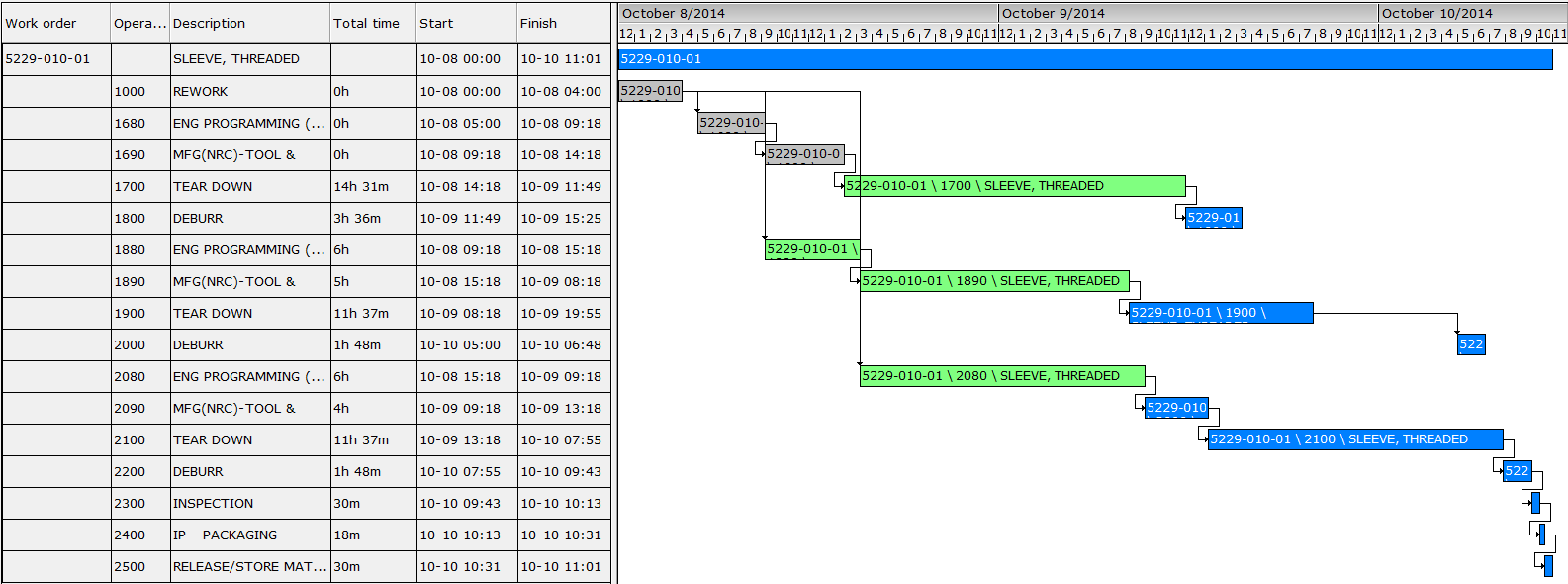Characteristics of Job Shop Scheduling
All manufacturing environments will benefit from a good production schedule. However, to attain maximum benefit, different environments require different approaches. One such environment is the Job Shop. Job Shop scheduling is a special case of production scheduling. Job shop scheduling environments are characterized by:
- typically engineer-to-order (ETO) or make-to- order
- engineering tasks that may constrain the schedule
- typically long routings, or routings of some complexity
- multiple simultaneous constraints , for example, both labor and machines
- machines that will intermix work on multiple orders (e.g. machining cells where different orders will be loaded on different pallets)
- the need to promise a competitive completion date estimate to the customer before the order is won
- the need to provide the customer continual status updates
Features Required for Job Shop Scheduling Software
Given their intrinsic complexity, Job Shop scheduling environments are the perfect fit for Finite Capacity Scheduling software, or Advanced Planning and Scheduling software. Effective Advanced Planning and Scheduling software has the robust modeling features necessary to model the inherent flexibility in engineering departments. These departments often must be the first steps handled by any job shop scheduling approach. For instance, engineers often will work on more than one project simultaneously, or be preempted and moved from one task to the next.
Advanced Planning and Scheduling Software can also model the complex “one to many” or “many to one” relationships between operations that are required in job shop scheduling. In many situations, particularly when products are unique, modeling precedence directly through these types of relationships make more sense than trying to define bills of material. Furthermore, graphical output (similar to that in project management software) that shows these relationships, as in the example below, makes the process flow much easier to follow in job shop scheduling environments.

The ability to handle multiple simultaneous constraints can be very important in job shop scheduling environments. For instance, sometimes multiple operations compete for the same machine, but other times there are multiple operations available to run on multiple different machines simultaneously, but not enough labor to staff the machines. Multiple constraints are also necessary to model the multi pallet machining centers that are often found in job shops.
Finally, in job shop scheduling environments, staff must interact with their customers over completion dates. Often, customers are placing orders for specially engineered product for specific applications. They need the product at a certain point in time to satisfy their customers. Therefore, the ability to give prospective customers an accurate estimated completion date is crucial. If the date you give is too far out, you end up losing the prospect to a competitor. If the date you give is too aggressive, you won’t be able to meet it, and you will end up with an unhappy ex-customer.
Given the importance of on time delivery, often job shop customers want continual updating from you on when work is projected to finish. Finally, if work looks like it is going to slip, you need to be able to know what actions to take to get completion dates back on schedule. Job shop scheduling software that makes use of advanced planning and scheduling technology will give you all of this capability.